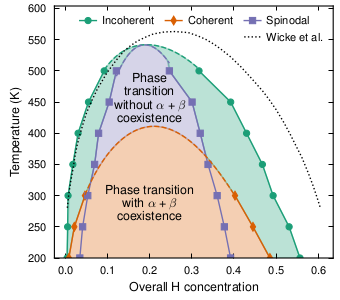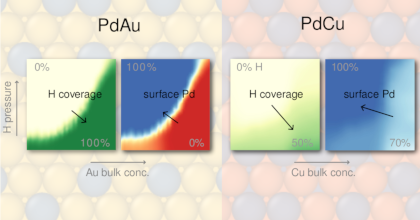Quantitative predictions of thermodynamic hysteresis: Temperature-dependent character of the phase transition in Pd–H
J. M. Rahm,
J. Löfgren,
and
P. Erhart
Acta Materialia 227, 117697
(2022)
arXiv:2110.07883
doi: 10.1016/j.actamat.2022.117697
Download PDF

The thermodynamics of phase transitions between phases that are size-mismatched but coherent differs from conventional stress-free thermodynamics. Most notably, in open systems such phase transitions are always associated with hysteresis. In spite of experimental evidence for the relevance of these effects in technologically important materials such as Pd hydride, a recipe for first-principles-based atomic-scale modeling of coherent, open systems has been lacking. Here, we develop a methodology for quantifying phase boundaries, hysteresis, and coherent interface free energies using density-functional theory, alloy cluster expansions, and Monte Carlo simulations in a constrained ensemble. We apply this approach to Pd–H and show that the phase transition changes character above approximately 400 ,K, occurring with an at all times spatially homogeneous hydrogen concentration, i.e., without coexistence between the two phases. Our results are consistent with experimental observations but reveal aspects of hydride formation in Pd nanoparticles that have not yet been accessible in experiment.



